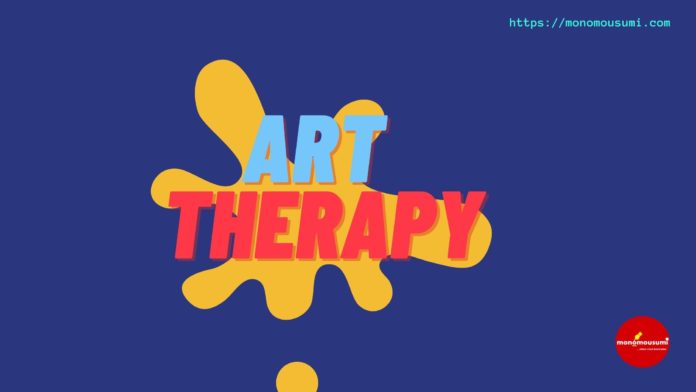Imagine yourself to be caged or imprisoned in a room; or maybe in a jail. You’re sad and depressed right? All the world seems to engulf you into the ocean of guilt and you are still gasping for a little land, with perhaps no hope left. Life is monotonous, dark, and unworthy. Imagine the same mental state of yours, when you’re left alone and no lively interaction is ready to accompany you to pull you out of stress and anxiety.
What do you feel?
You feel trapped and entangled in vast specks of darkness from where your mind has lost the power to architect a positive way of return. A colourless and unilluminated life seems to be waiting for you.
At this point, you’re probably just at the brink of making a decision; whether to fall or to turn back and propulse yourself towards the next chapter in life.
The decision is yours.
If your mind is still a little stable and wise enough to make you choose the second option, Congratulations! You now have plenty of colours to paint back your life to the most vivid piece of artwork ever.
You’ve entered the world of colours.
First Coined by the British Artist Adrian Hill in 1942, the term Art Therapy has its history of usage since a long time and dates back even to the primitive ages where art and experimentation with colours were one of the most innovative recreation by the cave dwellers.
Fetishism or poly-idolism since centuries in various cultures around the world have also contributed to a certain effective artistic therapy over the people of those times. However, only in the mid-20th Century the scientific and psychological approval to the therapeutic approach of art-therapy was ratified and it became popular among the people, who wanted mental reformation from a series of psychological ailments and also as an alternative way to cure many physical illnesses, and further to fulfil the spiritual needs of a man.
Since then, though mainly in the Western world, Art-therapy was developing with the contributions by various influential writers and artists who were committed towards the propagation and exponentiation of the virtues of art therapy. The most notable ones of them were Margaret Naumburg and Hanna Kwiatkowska.
Margaret Naumburg is often referred to as the “Mother of Art-Therapy”, and she was the founder of the Art-Therapy Movement in the US. She believed that the children would have a better and a more wholesome development if they were made to express themselves with their creativity and work with the subjects of their interests.
She thus, in a Psycho-analytic approach addressed this with the use of dynamic art and also symbolic expressions since she believed that healing can happen, when the symbolic and artistic traits of a person’s mind was combined with their cognitive experience. She has contributed much in this field and also wrote several books as an aide to the future advancements in Art Therapy.
Another major contributor to Art Therapy was Hanna Yaxa Kwiatkowska, who was a polish artist as well as a psychologist, and she conducted sessions with various families to intermingle her passion of art in the treatment of mental problems. Such sessions actually unearthed the fact that art therapy was serving as a great therapeutic relief to them, as they began to gradually identify their roles and position in the society.
Thus, such contributions have waxed up this art therapy as a strong and powerful alternative measure to tackle mental and as well as physical problems in contemporary times.
How can one get cured by Art-Therapy?
Well, Art-Therapy works the best in the ones who are suffering from mental trauma and are exhausted with isolation or simply are turning their back to society. However, at the same time, the positive response and cooperative spirit is also needed for those who are undergoing Art-Therapy. Since art therapy gives the opportunity to the people to express their inner feelings through creative artwork, concepts or designs, it’s especially helpful to the ones who dedicatedly do the work with their feelings.
Art therapy, as it is the work with artistry, must be directed by skilled and certified therapists who are professionally trained to decipher the psychological trends and help the patients with art. They have a comprehensive understanding of the powerful effects of art over the human mind, and use clinical as well as spiritual techniques to have their desired outcome. Some of the techniques which comprises Art-therapy are Painting, doodling, making comics and cards, carving on sculptures, and also practicing with geometrical patterns for hours and hours with full concentration.
Oftentimes, illness is closely mixed with strong emotions. Tactful techniques associated with art can help to awaken the deep-seated emotions of grief or anguish from the mind of a person and can easily emancipate him from this burden. The ones who are lonely and especially in the aged, the effect of Art-Therapy not only assists their psychological upliftment, but also can be a great aid to their lonely hours, which were previously preoccupied with distorted tensions and melancholies.
Many children are born as differently abled individuals, affected by chronic illnesses like dyslexia, Down’s Syndrome, autism, etc. It has been found out that even in them, whose communication abilities are very limited, they can better communicate themselves by using art and colours, and also it helps them to be distracted and be calm, while also sharpening their intellect.
One of the most striking effects of reformation done by Art-therapy is found among the inmates of a correctional home, or a Prison. According to a report by “The Times of India”, in Tihar Jail, one of the world’s largest correctional homes, for decades the extraordinary impact of Art-Therapy has borne remarkable results. The use of creative art has helped many convicts to take reformative actions in life.
For the ones, who are inexpressive and are reluctant to communicate to the other due to the feeling of isolation and guilt, the process of art therapy has given them the opportunity to reveal their thoughts and expressions without any fear. It also happens that the prison inmates become so mentally detached with the outer world, the Art- Therapy is considered to mould them stronger for their life outside the prison, once they finish their sentence. Many NGOs like “Family Vision”, “Ramchander Nath Foundation” and others now give training and therapy to the prison inmates today. Some of them even have gained so much skill through the therapy, that their works are there up in the exhibitions and competitions. Such therapy and its commendable success have once again proved that the aim of imprisonment is not only abstaining a man from anti-social activities, but also to reform his psyche and reintegrate them as the responsible citizens of the nation once again, and live the latter half of the life with morality and values.
In contemporary times, we are battling with two invisible and distinct deadly diseases: Covid-19 and mental ailments. The terms ‘isolation’, and ‘loneliness’, or ‘confinement’ have received new decorations in these two years. With the whole world trapped inside their homes and fighting inside and outside, there has been a rapid and a massive surge in the level of mental disorders in the common people.
However, as it is said that every distress has its cure, here also Art-Therapy has been one of the most potent ways to help us to steer ourselves out. Many stressed out or depressed people in the due course of their therapies have realized that art and colours are not only the test of creativity; but also, as a tool to express deep-seated emotions in us.
In India, we have our indigenous version of Art-Therapy, called the “Mandala Art”, which comprises the repetitive drawing of gyroscopic and geometrical colourful artifacts, which serves as a subtle window for one’s self-realization. It has been proved by psychologists that drawing Mandalas ease the way of resolving emotional blockages.
Practicing Mandala art, further enhances our cognitive skills and our level of concentration, which lies behind the simple fact that the symmetry and the spiral designs are helping us to create a balance between the left and the right hemispheres of the brain; at the same time, also exponentiating our hand-eye coordination.
In us, i.e., the school students whose academic life has been hindered by this pandemic and also has taken a toll on our psyche, Mandala art can be a great stress-buster and an anti-anxiety measure. We can easily take out our time and dedicate it towards this creative task and it can serve as a great step towards our constructive future for the country as well.
The mind, and art: both are like two unending spans of ocean, which can never be quantified or delimited into mere words of vocabulary. We need to perceive and understand and just feel about the tranquillity and peace of mind, which we can achieve.
Mind is where all the ideas and colours of the world are going to meet together and form the single picture called ‘perspective’.
And how will this picture be drawn?
It will be drawn by our inner eye and its colours will depend upon how we see the world around us with them.
Thus, Art-Therapy is such an alternative approach, which can definitely combine our mind with art and vice versa and eradicate all the darkness of vice from this pure and humane mind.
I would like to concur with stanzas from Henry Wadsworth Longfellow’s poem, “The Day is Done”, where he has expressed his thoughts on how poetry and songs, the distinct forms of Art can have a soothing effect on the human mindset, and how this whole humanity can be cured with Art, because art is not just confined to the canvas, but it is everywhere, in every form and every level of human intellect and creativity.
“Come, read to me some poem,
Some simple and heartfelt lay,
That shall soothe this restless feeling,
And banish the thoughts of day.
Not from the grand old masters,
Not from the bards sublime,
Whose distant footsteps echo
Through the corridors of Time.
For, like strains of martial music,
Their mighty thoughts suggest
Life’s endless toil and endeavour;
And to-night I long for rest.
Read from some humbler poet,
Whose songs gushed from his heart,
As showers from the clouds of summer,
Or tears from the eyelids start;
Who, through long days of labour,
And nights devoid of ease,
Still heard in his soul the music
Of wonderful melodies.
Such songs have power to quiet
The restless pulse of care,
And come like the benediction
That follows after prayer.
Then read from the treasured volume
The poem of thy choice,
And lend to the rhyme of the poet
The beauty of thy voice.”
-“The Day is Done”,
by H.W. Longfellow
By Upamanyu Basu











